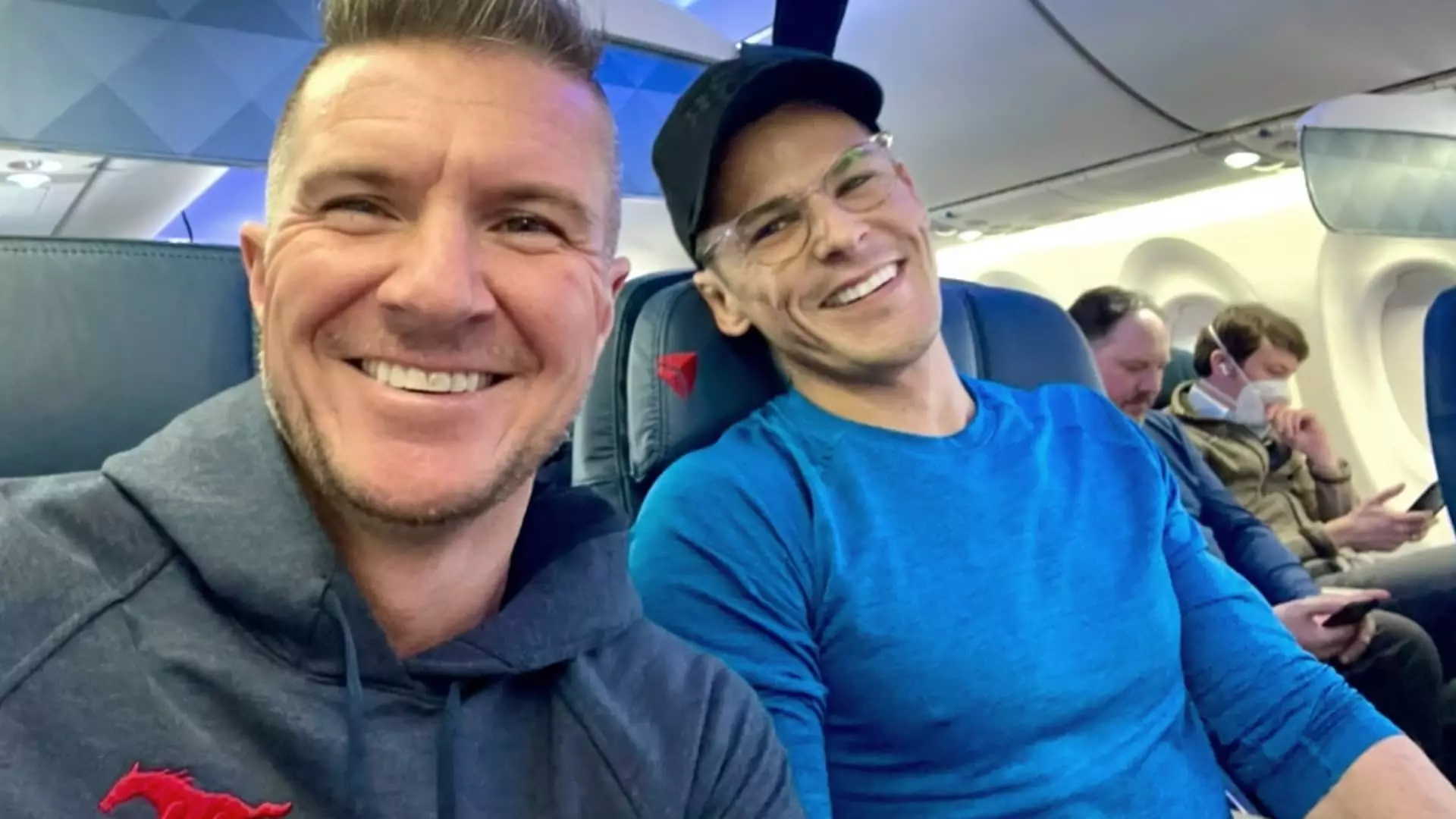Traveling by air, while often viewed as a mundane necessity for business professionals, presents a microcosm of social behavior that is both fascinating and revealing. The conduct of passengers on flights often correlates directly with behaviors we find in the workplace, making airplane etiquette an unexpected source of valuable life lessons. In his book, “How to Avoid Strangers on Airplanes: Survival Guide for the Frequent Business Traveler,” Brandon Blewett delves into this relationship between aviation experiences and professional challenges.
The Paradox of Air Travel Etiquette
At first glance, airplane etiquette may appear straightforward: respect personal space, remain unobtrusive, and heed the instructions given by flight attendants. However, numerous incidents of disruptive conduct suggest otherwise. Blewett’s examination highlights how these behaviors often mirror those encountered in business settings, prompting readers to introspect on how to respond to disruptive individuals. By translating the nuances of airplane etiquette into career strategies, Blewett sheds light on the importance of adapting to social dynamics both in the air and on land.
One of the more intriguing concepts Blewett discusses is “Gate Lice,” a term he uses to describe the manic passengers who swarm boarding zones, disregarding established protocols. This chaotic boarding behavior is reminiscent of competitive workplace landscapes where individuals may act in self-serving ways, often at the expense of their peers. By recognizing that just as some passengers block the aisle, there are colleagues who may obstruct our paths to career success, Blewett encourages a mindset shift. He proposes the “pivot” approach—akin to finding alternative routes in both boarding and job advancement when faced with obstacles.
Throughout his professional journey, Blewett faced various setbacks—experiences he likens to “smacks”—which at times left him feeling marginalized and disheartened. Just as airplane travelers must navigate occasional turbulence, professionals too must endure setbacks that can feel insurmountable. Blewett reflects on how past experiences, such as working as a car valet after law school, ultimately became stepping stones toward achieving his goals. He credits adaptability as the key to transforming dead-end situations into meaningful career pivots, encouraging readers to see potential in setbacks.
In dealing with difficult people—both in-flight and in the workplace—Blewett advocates for a blend of “wit, grit, and humility.” He draws a colorful parallel to Dolly Parton’s poised handling of a challenging interview, illustrating that employing humor alongside steadfast determination can yield positive results. Whether mediating a problematic situation on a flight or encountering tension in a conference room, the critical traits of resilience and quick thinking are essential. This distillation of character into effective responses serves to highlight how the qualities we cultivate can shape our experiences in high-pressure environments.
Observers often regard the “Eager Exiter,” characterized by an impatient rush off the plane as soon as the seatbelt sign is turned off, as a common nuisance. Blewett uses this archetype to discuss the futility of haste, both in the airport and in careers. The anecdote about a passenger attempting to cut the security line, only to provoke a delay, underscores a poignant truth about rushing. Just like in professional settings where quick decisions can lead to mistakes, the air traveler who yearns for immediacy may inadvertently create more hurdles. Thus, Blewett suggests that patience and measured approaches can lead to smoother experiences both on flights and in our career paths.
Creating a Supportive Network
As Blewett points out, help from one’s network can be a transformative force. The interactions aboard flights serve as a reminder that building a collaborative environment among colleagues can lead to tangible support during challenging times. The concept of “good seat neighbors”—those willing to assist and look out for one another—mirrors the dynamics we should cultivate in our professional circles. Advocacy, kindness, and collaboration in the workplace echo the camaraderie that can exist even amid air travel chaos.
In retrospect, Blewett’s observations compel a reevaluation of our behaviors—both in the air and on the ground. As professionals, recognizing how passenger etiquette mirrors workplace dynamics can lead to greater awareness and personal growth. By turning travel annoyances into sources of inspiration, we can enhance our resilience, collaboration, and ultimately, our success. Plane travel, with all its highs and lows, serves as an unexpected classroom, imparting crucial lessons on navigating life’s noisy, crowded journey. Through reflection on these experiences, we can learn to take flight, both figuratively and literally, towards our career aspirations.


Leave a Reply